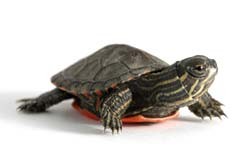Featured Articles
High Blood Pressure in Cats – Feline Hypertension – Pet tip 238
Although any cat can suffer from high blood pressure (hypertension) it is most commonly seen in middle aged or senior cats. In case we have forgotten what blood pressure means, blood pressure refers to the force (pressure) of circulating blood against the walls of blood vessels; the higher the force, the greater the amount of stress that’s put on the heart to move the blood. This can cause the heart muscles to enlarge, get thicker, and weaken thereby reducing life expectancy. It’s one of the vital signs used to measure the overall health of many animals including humans.
Dogs and Hybrid Vigour
Why does is seem that certain breeds of dogs are more likely to develop specific health problems than other breeds? For example, why are Doberman pinchers more likely to have heart problems than other breeds? You may or may not be familiar with the term “hybrid vigour”, but you have probably run across this concept before. In this article we will discuss how this term can be used to explain why various dog breeds are predisposed to developing certain health issues.
How are dog breeds created? If you think about it, all dog breeds descended from a single ancestor related to the modern wolf. The Chihuahua and the Great Dane, as well as the Yorkshire terrier and the Bull Mastiff all came from the same genetic background.
Issue 6: May 2003
Welcome to our sixth issue of the pets.ca newsletter. We would like to welcome Petcare pet insurance as the featured sponsor this month. Their pet insurance plans will give you peace of mind if ever your cat or dog should …
Turtles as Pets

Reptiles are quickly gaining popularity as pets throughout homes in North America. There are multiple reasons that people may want to keep reptiles as pets. They’re interesting to watch, they’re distinctive from traditional pets, their keepers may have allergies to fur, some reptiles are truly out of the ordinary, or perhaps people may think that they are less work and require less of a time commitment than their furry counterparts.
A lot of the above reasons are justifiable to want to own a reptile, but as discussed throughout this article, like any pet, reptiles, and particularly turtles, can prove to be more time-consuming and expensive than expected since they have specific requirements that are very different from those that you need to provide for your average furred companion.
Carrot and Cinnamon Puppy Treats
Dog treat recipe – Carrot and Cinnamon Puppy Treats – From Better Food for Dogs
NB: This recipe is for doggie treats. It should not constitute the primary diet of your dog, and is not suitable for cats.…
Carrot and
Cat History

The furry felines that inhabit our homes were not always a part of our families. It is believed that it was the Egyptians who first transformed the wild cat into a domesticated creature. This occurred an estimated 4000 to 5000 …
Arthritis in Dogs – Pet tip 96
Arthritis is an inflammation of the joint(s) causing discomfort due to pain and stiffness of the joint that can be debilitating. The occurrence of arthritis could be due to genetics, environmental factors, or a combination of both. Arthritis can be …
Journey Through Grief
Following are the general steps of grieving, which have been abbreviated for easy reference. We recommend that you copy and paste or print this page out. You may find it helpful in realizing that grief is a perfectly normal human …
Dog Nutrition
Dog Food, Cat Food, Pet Nutrition
Recipes for Dogs and Cats
What is a good dog food and what is a good cat food?
What’s the best dog food I can buy?
These are very common questions. The answer usually …
About Pets.ca
Since 2000 Pets.ca has been building an online community for pet lovers from Canada and around the world. Currently, Pets.ca receives thousands of daily visitors from every continent. Most of our visitors are from the USA, Canada the United Kingdom …
